Stop Mouth Breathing with Myofunctional Therapy and Expanders
If you are interested in a nice smile and you want to stop mouth breathing, you have found the right place. We are the TMJ Sleep and Breathe Center. An beautiful smile and airway performance should never be at odds. Our protocols can cure TMJ, stop mouth breathing, improve facial profile and correct posture. Our treatments include expanders, orthodontics, myofunctional therapy, breathing exercises and posture correction. The treatments are novel, holistic and life changing.
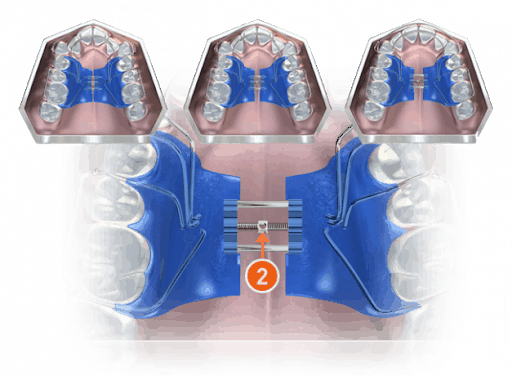
Why Nose breathing vs Mouth Breathing
There are so many reasons why nose breathing is better than mouth breathing. The nose filters, warms and humidifies the air we breathe. No one wants to breath dirty air straight into their lungs. Mouth breathing increases the risk of high blood pressure, heart disease and diabetes. Mouth breathing is linked to poor sleep, including obstructive sleep apnea (OSA) and airway resistance. Mouth breathing during sleep causes teeth clenching and nighttime bruxism. What is the best way to stop mouth breathing?
Why do people Mouth Breathe?
Difficulty breathing through the nose is ultimately what causes people to breathe through their mouth. We all need to breathe oxygen. If enough air cannot be inhaled through the nasal passageways, than mouth breathing will become necessary for life. The mouth is a larger space and more air can pass through the mouth than the nose.
How to stop Mouth Breathing?
- Improve breathing through the nasal passageways
- Prevent the tongue from falling back into the throat and airway during sleep. 99% of all obstructive airway conditions are caused by the tongue blocking the airway.
- Strengthen breathing muscles and correct dysfunctional breathing patterns
- Correct head, neck and back posture. Poor posture causes airway problems because the position of the neck, jaws, back and diaphragm has a lot to do with breathing and airway resistance.
How to Stop Mouth Breathing Video
How to improve Nose Breathing
Orthodontic appliances called palatal expanders are used to improve nasal breathing. They do so by increasing the size of the nose so more air can pass through it. The palate bone (maxilla) is the base of the nose. Expanders stimulate the palate to grow wider. When the palate increases in size, the nasal base gets larger and more air can fit through the nose. The are many different kinds of palatal expanders depending on the size a shape of the mouth. Notice in the picture below that the upper jaw and palate form the bottom of the nose.
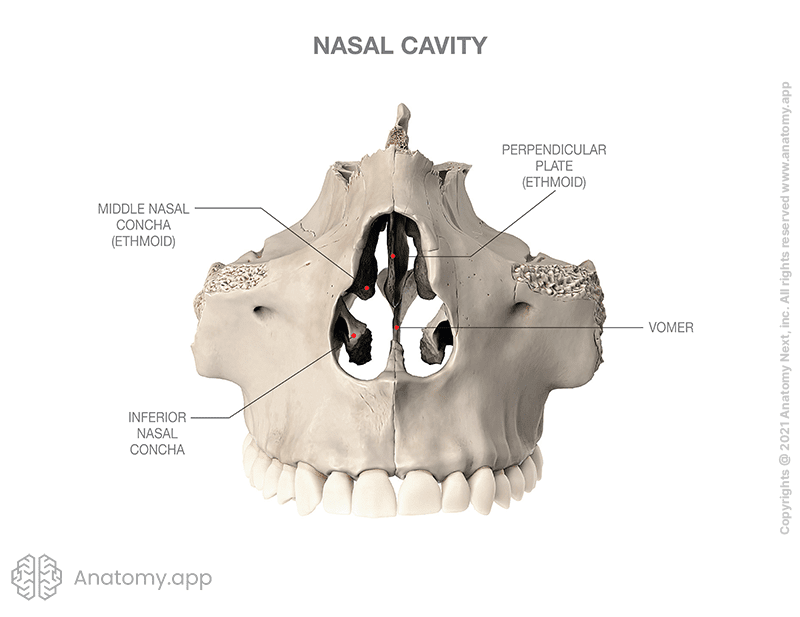
What does a palatal expander look like?
Expanders come in different shapes and sizes. This particular expander is a Schwarz appliance. It looks like a combination of a retainer, night guard and expander. Each case is different. Depending on the patient one kind of expander may be better than another. We evaluate each patient to determine how the palate needs to be changes in size and shape. Some expanders stay in the mouth all the time and others are only worn at night.
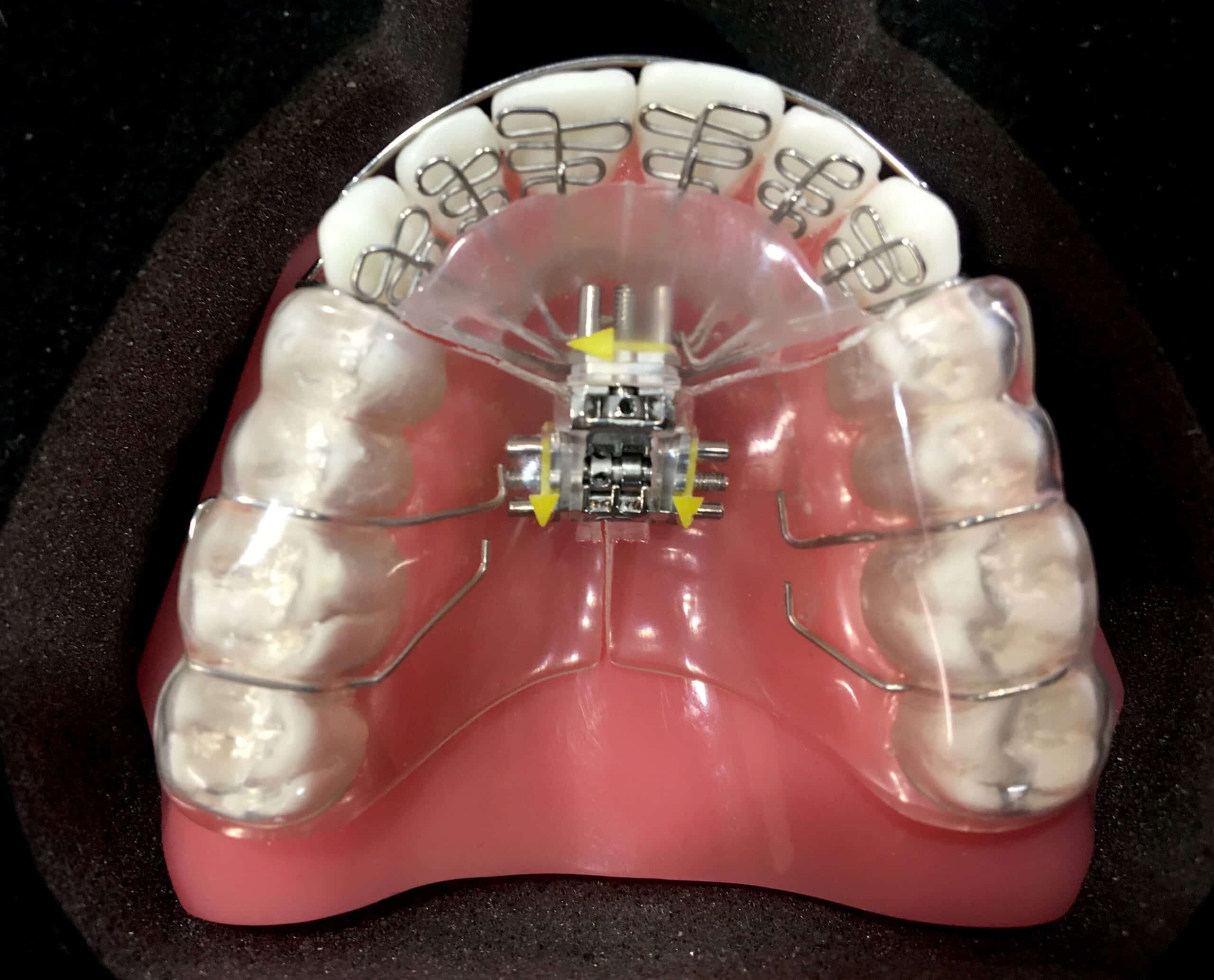
What is Myofunctional Therapy?
Myofunctional therapy is treatment that is focused on correcting tongue posture and function. It is usually performed by a Myofunctional Therapist. Treatment is usually performed in a dental office or with a Speech and Language Pathologist. We integrate Myo therapy with our overall service. Myofunctional therapy is an important part of orthodontics and sleep and airway treatment.
What is proper Tongue Posture and Position?
Tongues are supposed to be in the palate at rest and especially during sleep. The tongue is supposed to be on the palate like a suction cup stays on a glass window.
If the tongue is suctioned up on the palate during sleep it will not be obstructing the airway. Most mouth breathers have small high palates and weak tied tongues. Myofunctional therapy and palatal expanders will correct tongue posture by creating more space in the mouth and strengthening the tongue. Myofunctional therapists are like physical therapists for tongues. The key to stopping mouth breathing is fixing the tongue posture and function.
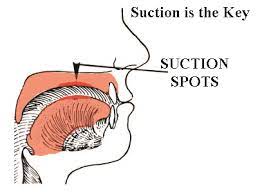
Mouth Breathing is Harmful for Development
And, yes, mouth breathing can also adversely affect how your face and jaw structure grows. Mouth breathing can change how your entire body develops, and impact your overall health for the rest of your life. And eventually lead to sleep apnea and tmj problems. But what causes breathing through the mouth instead of the nose? How can we stop mouth breathing and train ourselves to breath through our noses, as we should? Is there a link between TMJ sleep apnea and tongue ties?
How to Treat Mouth Breathing with Palatal Expanders
The combination of expansion therapy and tongue exercises promotes more forward, lateral and vertical growth in the mouth. The bigger space allows the tongue to stay in its proper position. And creates the conditions where breathing can occur through the nose rather than the mouth. In advanced cases of mouth breathing, the assistance of myofunctional therapist and and ENT may be necessary.
Dr. Adams treats his patients with a variety of different palatal expanders and forward growth appliances. Additionally lip and tongue ties need to be released. Our favorite expander is the Schwarz appliance. Dr. Adams also loves the ALF appliance when there is a lot of tooth crowding.
Mouth Breathing Causes “Mouth Breath Face”
Pressure from facial muscles, chewing muscles and the tongue causes the face to grow to its full potential. Mouth breathing uses dysfunctional muscle pressure compared to nose breathing and it can literally ruin facial profile and cosmetic appearance. Mouth breathing causes a condition called mouth breather face. Basically dysfunctional muscle pressure shapes the face into an ugly reverse profile.
When the mouth is left open to breathe, the muscles in the cheeks become tight and apply a backwards force on the teeth, jaws and facial structure. The cheek muscles put an external force on the upper and lower jaws, which creates a narrowing effect on the upper and lower jaws and the face. The lip muscles also exert a reverse pressure and pulls the jaws back. These forces resist outward growth of the face.
Usually during growth, the tongue exerts a light outward forces during chewing and talking. The tongue and pressure gently expands the jaws. When there is mouth breathing and a soft diet, all bets are off.
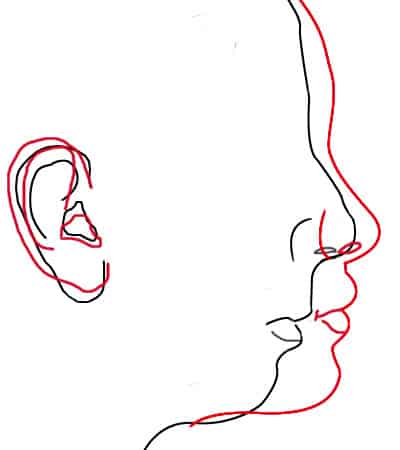
What does Mouth Breather Face Look Like?
Notice the reverse lower jaw position, small mid face and the dwarfed chin. This is classic mouth breather face picture. The child has been treated with a Schwarz expander, myofunctional therapy and a tongue tie release.
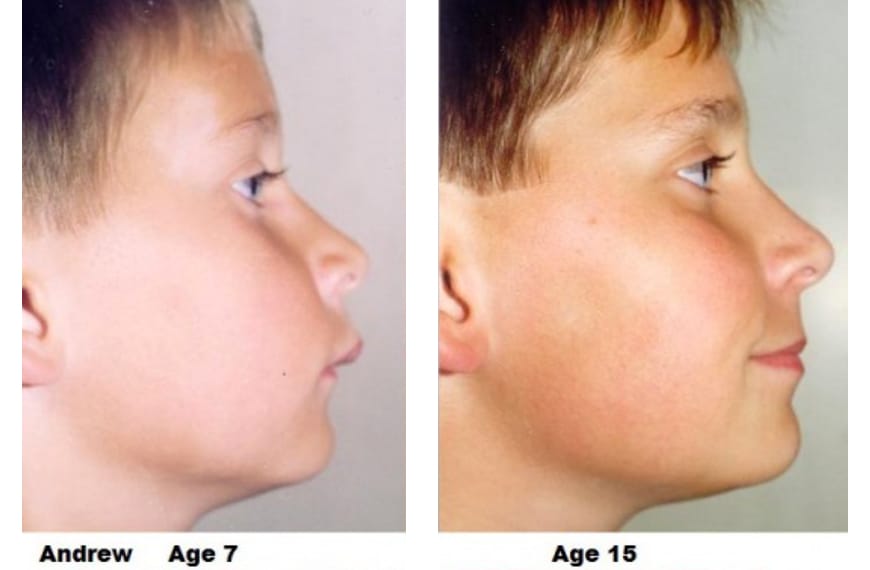
Tongue Ties Decrease Facial Growth
Mouth breathers keep their tongues on the floor of the mouth and have tongue ties that reduce the tongues range of motion. The tongue is the strongest muscle in the body for its size and is meant to naturally rest at the roof of the mouth and in the palate. The tongue is considered the “natural expander”. When the tongue is in the proper palatal position, it puts pressure on the upper jaw bone and stimulates enough forward bone growth for all the teeth to fit. The growth is achieved when tongue pressure on the maxilla stimulates bone growth. The jaw grows wider and more forward in response to tongue function. When one breathes through their mouth, the tongue stays in the floor of the mouth and the result is narrow and a high-vaulted palate. But why? Is it staying out of the way of passing air? is it just tied down? Perhaps the palate and upper jaw space are too small for the tongue to fit?
Tongue Ties Cause Mouth Breathing and Crooked Teeth
When the tongue is tied too tightly to the lower jaw, it’s movement and range of motion is limited and its shape is deformed. A tied tongue can sometimes not even reach the palate. And if it does reach the palate, the pressure on the palate is very minimal and insufficient to stimulate much of any anterior jaw and facial bone growth.
Tongue shape will also be deformed by a tie. As the tongue moves, the tie can draw the edges of the tongue inward and decrease the extension outward and upward. When the tongue is not able to move properly and put pressure on growing bone, development of the jaws and nasal passageways does not happen. When nasal passageways are not large enough to breathe through, people will resort to breathing through their mouths.
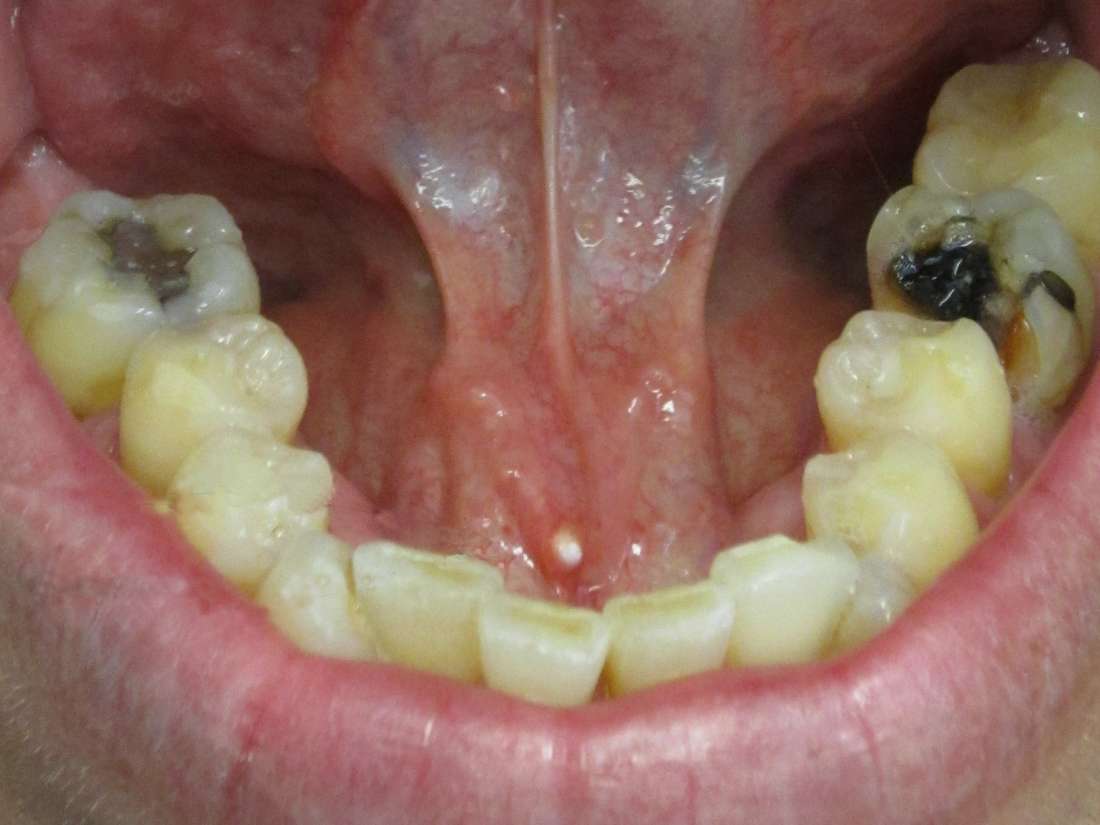
Tongue Tie Release can Stimulate Anterior Growth
Diagnosis and treatment of tongue tie at a young age is critical to airway development, healthy breathing function and overall health. Release of tongue tie is also called “frenectomy.” Once the tongue is “untied” it can be trained to reach the palate and move more forward to properly stimulate forward jaw bone growth. We call tongue training, “tongue therapy.” So what causes small mouths, small nasal passageways and airway obstructions in adults? Is it tongue dysfunction caused by tied tongue? Mouth breathing? What came first, the chicken or the egg? What happens is this:
- Tongue tie leads to impaired tongue movement and function
- The mouth and nasal passageways do not grow because the tongue is not providing growth stimulus
- Nasal passageways are too small for adequate breathing
- Mouth breathing occurs instead of nasal breathing
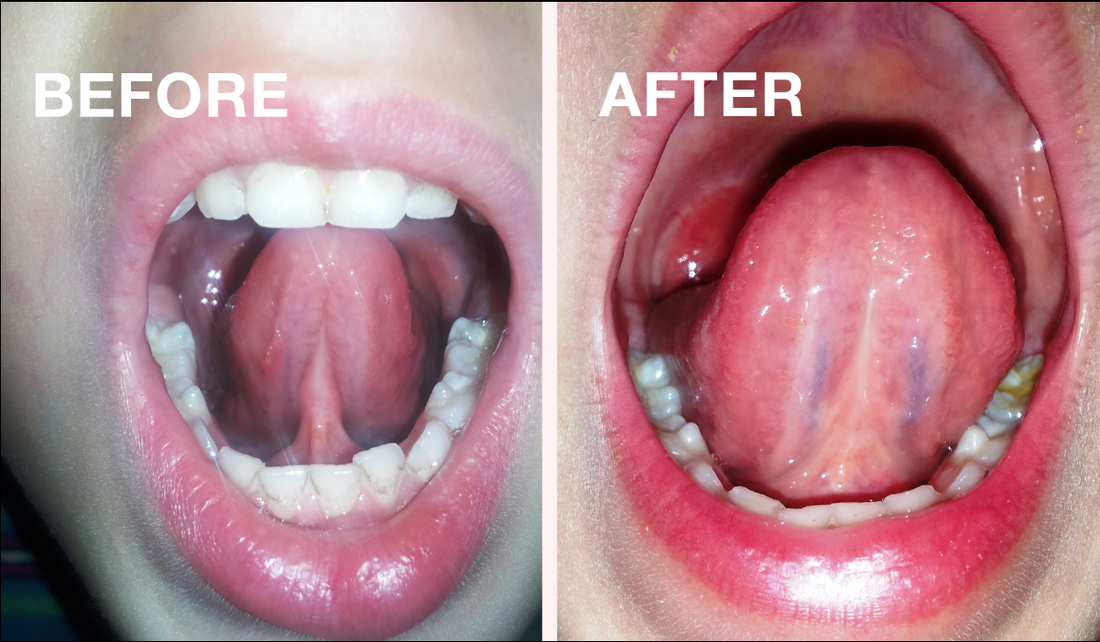
Nasal Breathing and Tongue Function
It is important to know that the bone on the roof of the mouth is the same bone as the floor of the nose; therefore, if tongue function does not stimulate the proper growth, nasal breathing will suffer. When the tongue is in the proper position, it applies outward pressures that helps the midface grow properly and in a forward direction. Low tongue and mouth -breathing contribute to the development of a mid-face deficiency because the tongue is not pushing on the facial bones. As a result, facial growth gets off track and turns into a downward and backward growth pattern. This negative growth pattern is a known risk factor for obstructive sleep apnea, TMJ problems and a bad bite. The vicious poor health and growth cycle just feeds on itself unless intervention occurs while there is still child growth.
Kids with pediatric sleep disordered breathing will often clench and grind their teeth. It is not normal for kids to clench teeth during sleep. It is a sign of airway problems and possible sleep apnea.
Adult Palatal Expanders
Newer non-surgical treatments such as DNA appliance therapy the AGGA, and the Homeoblock appliance can work for adults. Adult treatment like the AGGA takes longer and are more complicated. The ALF appliance can also be used for adults, but the above appliances grow more bone volume and are better tolerated by adults. 80% of adults with sleep apnea have tmj symptoms. The most common complaint in adults with sleep problems is TMJ and clenching pain/symptoms.
Why Mouth Breathing is Bad
- Mouth breathing patterns are more shallow and there is a tendency towards hyperventilation. Leads to less oxygenation of the lungs and other tissues and less than optimal bodily functions.
- Dry mouth and a decrease in pH in the mouth. The pH shift leads to more tooth decay and cavities.
- Nasal breathing stimulates nitric oxide production whereas mouth breathing does not. Nitric oxide increases blood flood for better oxygenation. Nitric oxide also kills bacteria and viruses before they enter the lungs. Finally Nitric oxide also acts as a decongestant to increase air flow through nasal passageways.
- Air entering the lungs via the mouth is unfiltered, drier and colder. This level or air quality causes inflammation in the tissues of the upper airway. The nasal passageways filters and warms air entering the lungs.
- Causes inflammation in tonsils and adenoids
- Increases risk of respiratory infections, sinusitis, and ear infections
- Poor levels of carbon dioxide which causes smooth muscle spasms. Smooth muscle spasms are implicated in gastro intestinal reflux disease, bed wetting in children and asthma.
- Risk of sleep disordered breathing and poor sleep. This can be anything from UARS to full blown sleep apnea.
Mouth Breathing is linked to Sleep Apnea
“Sleep Disordered Breathing” can be better described as “breathing patterns that cause sleep problems”. As one struggles to get enough oxygen into their body while asleep, often the brain causes the body to wake-up somewhat into a lighter sleep. That is, wake up enough to change position, open the airway or to gasp and take a forced breath. Decreased blood oxygen levels also stimulates teeth clenching. Teeth clenching is a reflex to help bring someone up into a lighter sleep. Usually the first thing that happens in lighter sleep, is the tongue will contract and move out of the airway. People with sleep disordered breathing (SDB), have small mouths and airway spaces. In deep sleep the tongue muscle relaxes and the tongue goes where it finds space and gravity pulls it-that is back into the oropharyngeal space and on top of the airway. Activation of the clench reflex, draws one out of deep sleep and clears the airway of the tongue. Usually the vellum of the tongue occludes the upper part of the airway when it relaxes and is no stimulated.
Airway Resistance causes Anxiety and Sympathetic Disorders
For sleep disordered people, the body is in a state of high alert and fight or flight all night long to make sure breathing does not stop. Breathing is a major effort as the airway collapses or becomes obstructed. Sleep is supposed to be a time of rest, recovery and recharge for all the body’s systems. Instead of having a restful night’s sleep, your body’s heart rate and pressure increases as oxygenation decreases. You toss and turn, clench your teeth, change body and head positions to open and clear your airway. You gasp, cough and maybe choke. Night time high blood pressure can cause your body to dump fluid volume and there can be a need to get up and urinate during the night.
Deep Sleep Improves Overall Health
People with SDB do not get enough stage 3 deep sleep because they cannot get enough oxygen as their airway collapses. Only when you get enough deep sleep, do you release important growth and reparative hormones that allow your body to sustain bodily processes day after day and year after year. Poor sleep patterns eventually lead to the most threatening health problems: high blood pressure, stroke, heart disease, Alzheimer’s, diabetes and depression. When breathing and sleep is disturbed, so is the essential repair work our bodies do each night to keep us happy, sharp and healthy. The fastest way to prematurely age and die young is to not get enough stage 3 deep sleep.
 703-712-1053
703-712-1053 